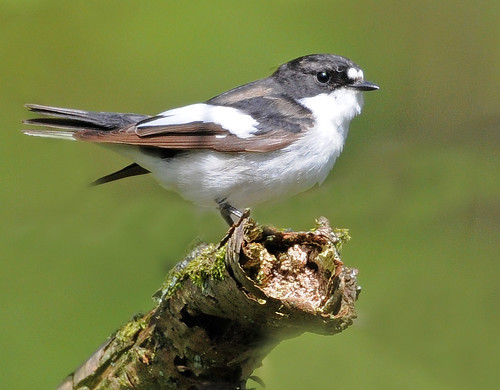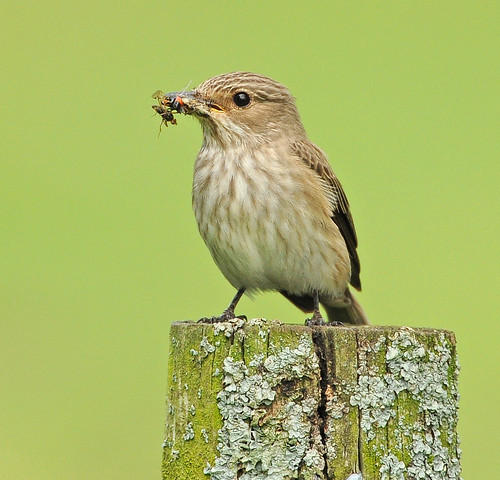Crossbills. Brian Rafferty.
Something of a coincidence, BR has had a day in Bowland this week and not only found Crossbills, but also took full advantage of doing so by achieving excellent photographs of the birds. This follows yesterdays post which referred to the 'unusual' bird at Helsington Barrows in February 1997 having been suggested through a photograph as being a possible 'xanthachroistic' male Crossbill by a reliable ornithologist whose knowledge on such matters I respect. I went on to claim never having found the meaning of the word, I should add including it not being in the Oxford Concise English Dictionary. In the comment section GG offered me an explanation which I intend looking into, thanks GG, meanwhile, I remain confused. Thanks to BR for the photographs.
Stonechat. Antonio Puigg.
This is a photograph of an African Stonechat saxicola torquata which I found on Antonio's website. Having already been in touch with Antonio Puigg he agreed to allow this image on Birds2blog....Many thanks Antonio.
I don't usually allow Birds2blog to become too scientific as I feel much of it is beyond the interest of the average birder, and when I start to try and read about subjects like 'A Molecular Phylogeny of Stonechats', 'Sequence and Taxonomy', together with DNA samples, etc, etc, its time to give up, but by way of a change this is a interesting picture of a species I'm not acquainted with though the differences to the ones I am are subtle. To go deeper into confusion, as I see it there are 14 subspecies of the African Stonechat saxicola torquata and to try to study illustrations of the varying amounts of chestnut on the breast of males of the various subspecies - which is the main distinguishing criteria - may well be generally understandable but some of the subtleties would be beyond me in the field let alone in an illustration....I think I should leave it there, don't you!!
And finally....
I don't usually allow Birds2blog to become too scientific as I feel much of it is beyond the interest of the average birder, and when I start to try and read about subjects like 'A Molecular Phylogeny of Stonechats', 'Sequence and Taxonomy', together with DNA samples, etc, etc, its time to give up, but by way of a change this is a interesting picture of a species I'm not acquainted with though the differences to the ones I am are subtle. To go deeper into confusion, as I see it there are 14 subspecies of the African Stonechat saxicola torquata and to try to study illustrations of the varying amounts of chestnut on the breast of males of the various subspecies - which is the main distinguishing criteria - may well be generally understandable but some of the subtleties would be beyond me in the field let alone in an illustration....I think I should leave it there, don't you!!
And finally....
Siskin David Cookson
Spot the difference between DC's Siskin, and....
Serin. Antonio Puigg.
AP's Serin....not a lot!

.jpg)

.jpg)





















